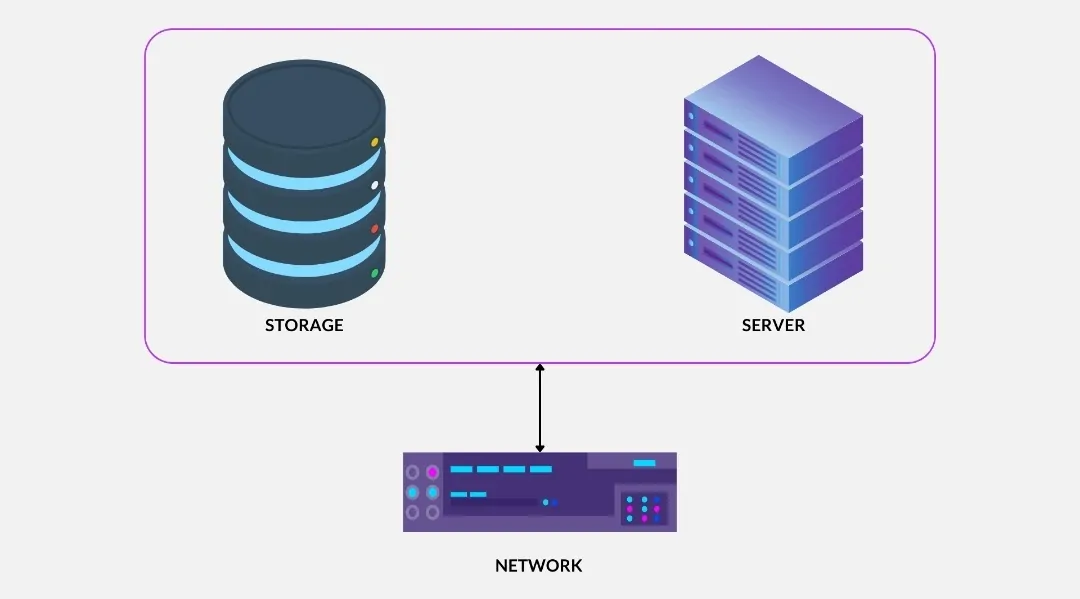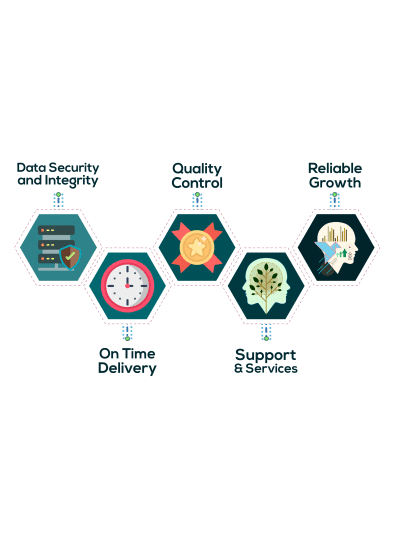
Breaking Down Hyperconverged Infrastructure: A Closer Look at Its Functionality
With today’s digital marketplace moving rapidly, organizations are under pressure to transform their IT infrastructure and be competition-ready. Moreover, legacy data center structures involving storage, computing, and networking resources can be expensive to purchase. Welcome to the world of Hyperconverged Infrastructure (HCI)—a game-changing technology for making data centers simpler and more optimal. Let us delve deeper to understand HCI, its functions, advantages, and challenges.
What Is Hyperconverged Infrastructure?
Hyperconverged infrastructure is an IT framework that integrates the functions or processes around computing, storage, and networking, in which virtualization is used for all necessary elements. In traditional architectures, server, storage, and network resources typically compartmentalized into separate domains are converged into this platform. The unified software interface enables organizations to oversee their infrastructure as one, simplifying the management of dedicated systems.
HCI is a software-defined infrastructure integrating standard, off-the-shelf servers with intelligent software. Therefore, it simplifies the infrastructure to be much easier and more scalable so that modern application demands such as cloud computing, virtualization, and big data analytics can simply be upgraded with scale-up.
How Does Hyperconverged Infrastructure Work?
HCI does this by creating and maintaining an abstraction layer on top of physical resources so it can pool this hardware capacity into a virtualized cluster. This is best for managing the clusters via a software layer (the hypervisor). The hypervisor virtualizes the hardware, so multiple Virtual Machines (VMs) can better share common physical resources. This is how the main attributes of HCI work together:
Compute: HCI aggregates the resources of various physical servers, allowing them to be shared and viewed as part of a larger virtualized compute resource. Memory and CPU resources can be allocated as part of creation, which helps allocate memory or CPU according to the requirement.
Storage: HCI virtualizes storage pools using HDDs, SSDs, and other media types to replace traditional SAN or NAS devices. It integrates external storage devices onto compute resources, making it easy and simple. HCI also provides automatic sharding at the service level, ensuring redundancy and high availability by spreading data across multiple nodes in a cluster.
Networking: Virtual networks within the SDDCs offer connectivity for VMs while managing network traffic. The simplification allows changes in network configurations without the manual labor at the physical level.
Management: HCI has introduced centralized management software to streamline IT by providing all necessary infrastructure management capabilities in a single vendor-neutral interface. This technology aims to make IT simpler and reduce errors, as humans have fewer variables to deal with during initial setup.
HCI is software-defined, which means that IT teams no longer manually configure individual hardware components. Instead, they can manage them through automation and orchestration tools, which results in efficiency and rapid deployment.
Benefits of Hyperconverged Infrastructure
This increasing presence of HCI is achieved due to its multiple advantages in an organization, especially for those moving towards IT modernization. Some of the most important benefits are:
Simplified Management: Publicized as one of the best benefits that HCI provides is its life-long easy management. Common software interface for all the resources — Compute, storage, and networking are managed under a single dashboard by administrators. This eliminates the specialization required and simplifies IT operations.
Scalability: HCI allows adding extra nodes in an organization’s cluster when needed, which can be a great scalability option. With that, companies can keep it small and grow as their infrastructure needs to without a significant hardware update or complicated reconfiguration.
Cost Efficiency: Since HCI is an integrated system that combines computing, storage, and networking resources, it eliminates the necessity for multiple hardware systems as standalone entities. It reduces capital expenditures (Capex) and operating expenditures (OpEx). Improved manageability benefits HCI, which requires less prevalent IT teams and thereby further reduces operational costs.
Improved Performance: HCI systems are created to enhance the performance of applications and virtual machines. Because HCI stores data locally and spreads it across the nodes, latency is reduced to ensure no waits for an application looking for resources. This is especially useful for resource-hungry workloads such as databases, analytics, and virtual desktops.
Enhanced Resilience and Availability: HCI systems are designed with fault tolerance. When a node in the cluster fails, data is still available as it has been distributed across nodes. This increases the high availability of critical workloads, lowering downtimes.
Cloud Compatibility: Designed to work with hybrid cloud (so you can leverage existing on-premises infrastructure while expanding to public cloud, if necessary) It allows businesses to have the benefits of both private and public clouds, without losing control over their data and applications.
Challenges of Hyperconverged Infrastructure
HCI has challenges despite the many benefits it has to offer. The downsides of HCI are significant, and organizations should carefully consider it before deciding that it’s the right solution for their environment:
Initial Costs: HCI has the potential to mean lower costs in the long run; getting to that point can also be quite expensive, as you will need significant investment in the hardware and software levels. However, the initial cost is a hurdle for small organizations with limited budgets.
Vendor Lock-In: Many HCI platforms are extremely proprietary, ensuring that companies might accidentally get vendors locked into a single provider. It can be a limitation of flexibility that ultimately prevents us from easily switching vendors or integrating the various third-party tools.
Limited Customization: HCI systems are known for being easier to manage compared with traditional 3-tier architectures, in exchange for lesser control over the underlying infrastructure. Those with very specific workloads or requirements around hardware might find that HCI isn’t quite customizable enough for them.
Scaling Limitations: HCI is scalable, but some organizations may find it difficult to scale a cluster beyond certain limits due to complex network and storage requirements, resulting in lower system efficiency. Large enterprises with massive data centers need to carefully plan their scaling and caching strategies.
Learning Curve: HCI may simplify management, but IT teams used to traditional infrastructure may struggle to transition. Businesses migrating to software-defined infrastructure may require new skills and training on application performance, optimal application level, and potential information exchange bottlenecks.
Conclusion
Hyperconverged infrastructure is a real game changer in IT infrastructure and introduces dramatic changes in how organizations build and manage their IT environments. By converging compute, storage, and networking resources in one software-defined platform, HCI reduces management complexity, increases scalability, and decreases costs. This is especially true for organizations that want to modernize their data centers, extend support for virtualized workloads, or embrace hybrid cloud approaches.
However, we must accept that, like any technology, even HCI has specific challenges. In the end, HCI is a great way to drastically reduce complexity and increase operational efficiency in your organization. Still, it might not be suitable for every type of use case.
With newer technological advancements, one can only foresee a greater assimilation of HCI and cloudscape going forward, which will undoubtedly be instrumental in defining the IT infrastructure of tomorrow. Whether for a small business or a large enterprise, the route to a more agile, cost-effective, and scalable HCI infrastructure is compelling.



